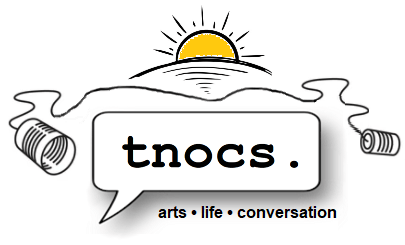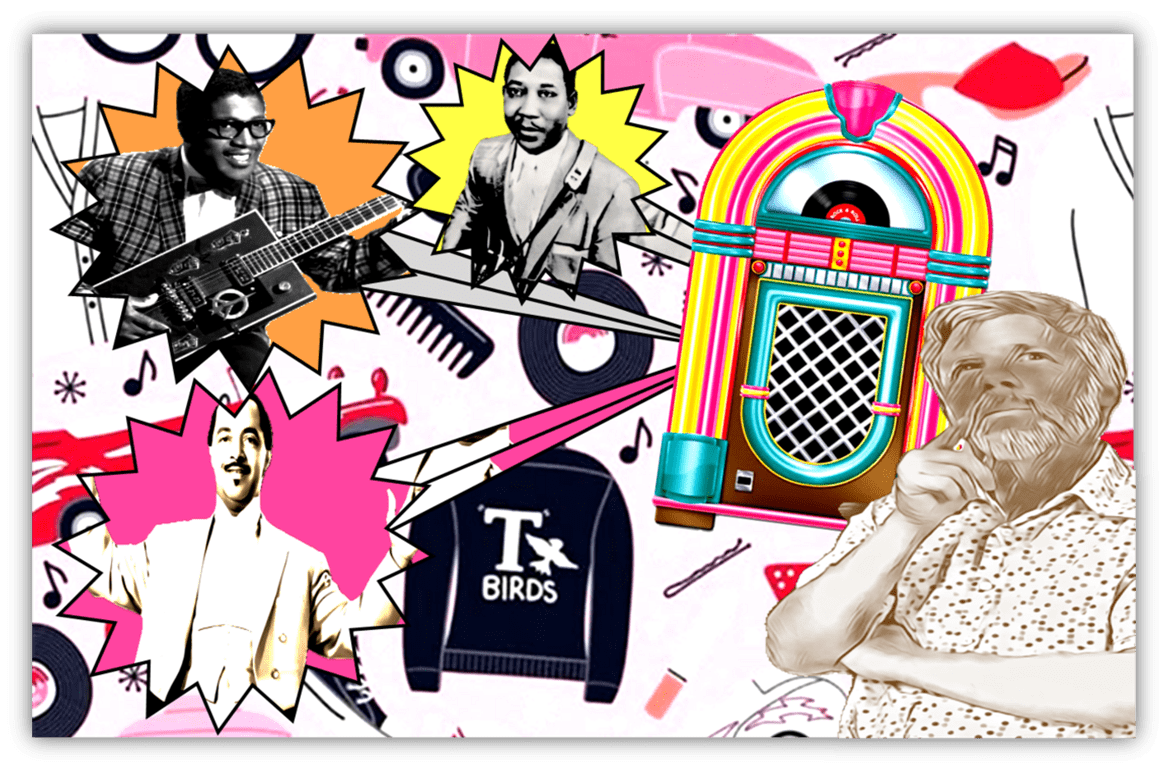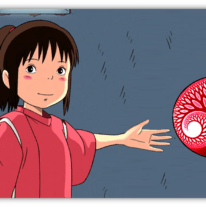The Hottest Hit On The Planet:

“Rock Around The Clock”
by Bill Haley & His Comets
Bill Haley wanted to call it “crazy music.”
Imagine that.
Imagine a parallel reality in which nobody knows what rock’n’roll is, because what we now know as rock’n’roll had been dubbed “crazy music” instead. Imagine a Crazy Music Hall Of Fame.
Bill Haley’s preference for “crazy music” over rock’n’roll was likely because he’d already had a hit with a record called “Crazy Man, Crazy” way back in 1953.

Bill Haley was, if nothing else, a man who understood the importance of branding.
“Crazy Man, Crazy” had the distinction of being the first rock’n’roll record to cross over into the Billboard Pop Charts, and it set the template for pretty much every other Bill Haley record to follow: shuffling back beat, blistering guitar solo – at least by the standards of the time – and Bill enthusiastically reciting the title over and over again.
Bill wanted “Rock Around The Clock” to be the follow up single to “Crazy Man, Crazy”, but the producer was having a feud with one of the writers: Jimmy DeKnight:

Real name James E Myers, whose name is on the credits, even though it is possible that he never wrote a word.
No one seems to know what the feud was about. It’s possible they just didn’t like each other.
And so “Rock Around The Clock” wasn’t released – or even recorded – in 1953.
That’s probably for the best though. As appropriate for a song with such a title, it was critical to strike when the time was right.
The time still wasn’t right when “Rock Around The Clock” was released in 1954. But that may have been because it was only released as a B-side. The A-side, the song with hit potential, was an atomic-age novelty called “Thirteen Women (And Only One Man In Town):”

An orgy of euphemisms, in which a hydrogen bomb is dropped, Bill is the only man left alive and thus is left with 13 women to, um, butter his bread.
You will not be surprised when the song ends, and it turns out that it was all just a dream. You will also not be surprised to learn that it was not a hit. Nobody wanted to think about Uncle Bill having sex. EW!!
At about the same time, another version of “Rock Around The Clock” was released – by Sunny Dae and The Knights and seriously these punny names are off the hook – and this version too was not a hit, perhaps because it was some freaky jazz thing.
But in the summer of 1955, “Rock Around The Clock” exploded. Like absolutely exploded. Generationally definitively exploded!!
Why?
“Rock Around The Clock” was far from the first rock’n’roll record to explode.
“Sixty-Minute Man”, “The Wallflower”, “Work With Me, Annie”, “Tweedle Dee”, “Shake, Rattle & Roll” (which Bill also had a hit with) had all been BIG RECORDS!!! Mostly amongst Black folk, but often amongst white folk too (even before white folk covered them)… but “Rock Around The Clock” was the first one to get all the way to Number One.

And, regardless of whether you prefer the “Best Sellers In Store”, “Most Played By Jockeys”, “Most Played By Jukeboxes” or even the usually especially stuffy “Honor Roll Of Hits” chart, it stayed there for weeks.
Why?
Bill Haley was not cool. He was not especially young. Bill was about 30 when “Rock Around The Clock” hit.
Bill sounded less like one of the kids who bought his records, and more like he was taking his students on an excursion to rock town.

Bill had started his career as country singer of the yodeling cowboy school… if not for his embrace of “crazy music” he could have ended up singing “The Ballad Of Davy Crockett.”
Now, the most obvious reason for Bill hitting harder than those other R&B hits was that he was white. Bill may not have gotten all the opportunities that he had if he hadn’t been white. But he was also signed to Decca, a major record label.
Most of the other proto-rock’n’roll bands that we’ve covered – Joe Turner, Hank Ballard, Bo Diddley, Fats Domino – were not signed to major record labels.
Decca was a hit-machine.
They had hits in the country field with Kitty Wells and Webb Pierce.
They had hits in the pop field with The Four Aces.

They seem to have slightly lost their mojo in the R&B field but a few years earlier they’d had both Louis Jordan and Ella Fitzgerald (they appear to have lost market share in the R&B market about the same time that Black indie labels like Federal and Chess took over)…
Decca was the perfect home for Bill and his brand of music that was a little bit country, a little bit R&B, and wasn’t shy with the pop, either.
Decca also had Milt Gabler, who had had his fingers all over everything from Billie Holiday’s “Strange Fruit” to The Andrews Sisters “Rum & Coca Cola,” stopping in with Louis Jordan, Ella and the Ink Spots along the way.

Nobody knew how to produce an R&B crossover hit quite like Milt.
And Milt had produced “Rock Around The Clock.”
But “Rock Around The Clock” had flopped the first time around. What was different now?
The difference was that “Rock Around The Clock” was now on the soundtrack to a new hit movie:

Blackboard Jungle.
A movie in which – quite appropriately given Bill’s own age – grown-ups played high school students. That included a 28-year old Sidney Poitier, playing the leader of a gang of unruly students, about a decade before he’d play a teacher trying to get through to a bunch of unruly students in To Sir With Love.
“We, in the United States, are fortunate to have a school system that is a tribute to our communities and to our faith in American youth.
Today we are concerned with juvenile delinquency — its causes — and its effects. We are especially concerned when this delinquency boils over into our schools. The scenes and incidents depicted here are fictional.
However, we believe that public awareness is a first step toward a remedy for any problem. It is in this spirit and with this faith that BLACKBOARD JUNGLE was produced.”
Seriously, what’s with that opening crawl?
First they talk about their faith in American youth, then they suggest they are all juvenile delinquents. Then they claim that they believe that public awareness is a first step towards a remedy, even though the scenes and incidents they are supposed to remedy are fictional?

That’s the spirit and faith in which Blackboard Jungle was produced?
“Rock Around The Clock” was a song that began the rock’n’roll revolution through its involvement in a beat-up-tabloid-news-report-cum-very-special-episode.
Whatever. “Rock Around The Clock” was in a movie, and the kids all rushed to see it. “Rock Around The Clock” was a hit because the first time you heard it, it was bursting out of surround-sound movie theatre speakers!
For a song that supposedly started a revolution “Rock Around The Clock” is surprisingly… not conservative exactly, but… centrist?
Bill Haley was too much of a sexless normie to pose a threat to anybody. The song even uses antiquated terms such as “glad rags”, a lyric that must have felt strangely old fashioned even in 1955.
Indeed, Google Ngrams suggests that use of “glad rags” peaked in 1912.

It’s incredible that anyone, anywhere, ever regarded Bill as a rebel. In order to get that kind of a reputation would require a riot. And the kids provided one.

Specifically, the kids at Princeton.
That was in Billboard, the week that “Rock Around The Clock” first busted into the Top Ten Best Sellers. The night of the riot, after Blackboard Jungle finished its run at the Princeton Theatre, ten students headed straight to the university record store to buy ten copies of “Rock Around The Clock”, with a mischievous plan to open their dorm windows and play the record simultaneously, from all corners of the campus, “in hopes of triggering an outburst.”
Water hydrants were set off! Toilet paper was lobbed into trees!! The kids chanted “GO! GO! DADDY-OH!!”
What crazy anarchists!!!
Before too long rioting along to “Rock Around The Clock” at a screening of Blackboard Jungle became the thing to do.
Maybe that’s why the movie isn’t remembered so well now:

After rioting at the beginning – and presumedly being thrown out of the cinema – few ticket holders could remember very much about the rest of it.
It’s ironic then – given its association with Blackboard Jungle, given the Princeton Riots – that some experts believed that rock’n’roll was playing a role in reducing juvenile delinquency. That’s because it was about this time that radio DJ Alan Freed was approaching the peak of his cultish hold over the late-night attention spans of American teenagers:

His “Rock’n’Roll Party” radio show held responsible for getting the kids off the streets at night.
“We’d rather listen to Alan Freed then go roaming the streets” Johnny Wollard of Long Island City High School was quoted to have said.
Yet he looked even less like a teenage revolutionary than Bill himself did. And he was even older. He was 32.

But he possessed such a unique ability to sound truly excited about rock’n’roll – as well as truly excited about all the products he was advertising – that he was able to make an entire generation excited about it too!
Such was Alan’s cult-like hold over American youth that this will not be the only time he will be mentioned in today’s column!
These are all very rational reasons for “Rock Around The Clock” becoming such a massive era-defining hit, but they are reasons directed at your head. The real reason is directed at your feet:

“ONE TWO THREE O’CLOCK, FOUR O’CLOCK ROCK! FIVE SIX SEVEN O’CLOCK,EIGHT O’CLOCK ROCK…” etc.
“Rock Around The Clock” is simply an undeniable everybody-get-on-the-dance-floor party starter.
“Rock Around The Clock” is an 8.
Meanwhile, in Rock’n’Roll Land:

“Maybellene”
by Chuck Berry
If rock’n’roll is partially country singers, like Bill Haley, singing R&B, then it’s also R&B performers singing country.
Why did this happen? How did this happen? Maybe rock’n’roll was born with it. Or maybe it was “Maybellene.”
That was a terrible joke, I know. Awkwardly worded. But it’s a terrible joke with a point. A terrible point based on a fact. And that fact is:

That “Maybellene” was indeed named after Maybelline.*
Chuck Berry knew all about Maybelline because he had worked in a beauty parlour. He had trained as a beautician.

This explains why Chuck always looked so sharp.
Chuck Berry had had a lot of jobs before he pretty much invented rock’n’roll – sorry Bill.
He’d been:
- A janitor
- An automobile assembly worker
- A beautician… oh, and…
He’d been to jail.

When he was just a teenager he’d gone to the Intermediate Reformatory for Young Men after committing armed robbery of three stores in Kansas City.
Then his getaway car broke down, so he had to flag down another car and steal that as well… given the subject matter of “Maybellene” – named after, but not actually about, cosmetics – this feels relevant.
Chuck began to leave his beautician life behind when he started playing at the Club Cosmopolitan in East St. Louis.

A club that looked far less glamorous than its name might suggest.
Initially he was just the guitarist for Johnny Johnson.

But even before he took over the band – Johnny being a shy and retiring type – he was credited as a featured artist.
Now, Chuck was a showman.
He was probably already doing that duck-walk thing. But what he was most famous for at the Club Cosmopolitan was playing hillbilly tunes. It’s not impossible that he was playing them as a joke. The audience seemed to think it was a joke.
They also thought Chuck was crazy.

People started to talk about “that Black hillbilly.” Or, alternatively, “that crazy Black hillbilly.” White country folk started turning up at the Club Cosmopolitan to hear Chuck play hillbilly songs… Chuck was bringing the races together… the Club Cosmopolitan was actually turning cosmopolitan!
“Maybellene” was one of those hillbilly tunes, and here I am required by rock critic tradition to mention that it was a rewrite of “Ida Red”, an old country tune from who knows when or where, but most famously recorded by Bob Wills & His Texas Playboys. Chuck, it appears, was plum fool about “Ida Red.”
Chuck’s version of hillbilly was convincing enough that some people thought he was actually a white hillbilly. Bob Dylan, most famously.
Also the management of a venue in Knoxville, Tennessee, who booked Chuck thinking that he sounded white, but couldn’t let him on stage because there was a city ordinance against Black people performing. They thought his elocution was too good for a Black guy. Chuck placed a lot of effort into his elocution.
Once you’ve written lyrics as detailed as “Maybellene” you want people to be able to understand them.

You also want people to be able to hear them, and for that you need a recording contract.

Chuck went up to Chicago to get a record contract, managing – via sweet talking Muddy Waters – to get in with Chess Records.
Now, Chess Records was the home – as you should know by now – not only of Muddy Waters, but Howlin’ Wolf and Bo Diddley. Chuck instantly outsold all of them, probably combined, and for a very simple reason. Instead of singing about being a hoochie coochie man or some such nonsense, Chuck sang about the sort of thing that the booming teenage demographic would understand. Which, in the case of “Maybellene”, was cars.
Cars, in mid 50s America, were hot.
At least partially because they looked amazing. Those fins! Those colours! Racing those cars, whilst drunk, in order to impress Natalie Wood, was hot.

As evidenced by Rebel Without A Cause.
Rebel Without A Cause hadn’t been released yet – wouldn’t be until October – and James Dean was still alive – he’d die in a car crash in September – but something was clearly in the air. At the same time “Maybellene” was racing up the charts, two other similarly themed tunes were doing big business.
There was a novelty doo-wop group called The Cheers with their hit about a motorcycle-riding hoon: “Black Denim Trousers and Motorcycle Boots,” – it was written by Leiber & Stoller, with Les Baxter’s Orchestra as the backing band – a theme they would continue with the non-hit Rebel Without A Cause cash-in “Chicken.”
There was also a band called The Cadillacs with a song called “Speedo” and sure, technically it’s about how the lead singer is fast with the ladies, but you can’t tell me kids weren’t hooning about in their own Cadillacs to it.
Something was clearly in the air.
Something that would inspire Chuck to write a song, a song that might be a spurned love song, with Chuck upset that “Maybellene” has done started doing the things she used to do, but equally, could simply be a song about a race between a V-8 Ford and a Cadillac Coupe de Ville.

Maybellene (the girl) is clearly perfect for Chuck; the possessor of the only car capable of outrunning Chuck’s V-8 Ford.
Indeed, Maybellene and her Cadillac seem to be winning in the first two verses, so much so that Chuck’s V-8 Ford is overheating… but that’s okay, because it starts to rain, and the rain cools the engine down. That apparently does “the motor good.” I have now learnt more about 1950s automobile maintenance from this song than I ever knew before.
With his motor cooled down, Chuck is finally victorious over Maybellene and her Cadillac.

Or is he?
For some have suggested that the Cadillac “standing still” at “the top of the hill” means that the race has ended at a Lovers’ Lane, and Maybellene is indeed doing the things she used to do. Poor Chuck.
To promote this zippy little record about zippy little cars, Chess Records sent “Maybellene” to Alan Freed, who was reputed to have played it on repeat – on his radio show – for two solid hours!
Surely this can’t be true. And if it is?

Surely it has nothing to do with the fact that Alan was credited as co-songwriter, despite never having met Chuck or even been in the same timezone together.
You can understand why people thought Alan was involved in payola, can’t you?
Chuck and Alan finally met at another “Rock’n’Roll Show” in September, where the headline act was… Tony Bennett?
Who apparently had to sing far louder than he was used to – “burst a small blood vessel in his larynx” – and consequently lost his voice.
(I do miss the era of dismembered floating heads on festival photos; Coachella, can you bring that back next year, please?)

Chuck was almost as old as Bill when he recorded “Maybellene”, but he seemed to think and feel like a teenager.

If you want to know what being a teenager was like in the 50s, you could read Catcher In The Rye.
You could watch Rebel Without A Cause.
Or you could listen to the greatest hits of Chuck Berry.
Since it is a rare Chuck Berry record that lasts for longer than 3 minutes, the latter would be the most time efficient. And quite possibly the most fun.
And didn’t they? Having uncovered such an R&B Beat X Hillbilly Twang X Teenage Preoccupations = HIT! Formula, Chuck would spend the next half decade documenting 1950s teenage life up-close. In the end he would document it a little bit too up-close… but that’s another story.
“Maybellene” is a 9.
*I’m, like, 90% certain it’s a fact. Multiple sources mentioned it. One source mentioned… something else, I can’t remember.
Meanwhile, in Doo-Wop Land:

“Only You”
by The Platters
Rock forward a year, and Bill Haley would get his own movie.

Inevitably, it was titled Rock Around The Clock… it promised to tell “The Whole Story Of Rock’n’Roll.”
It also featured The Platters singing “Only You.”
The Platters (and their backing band, The Ernie Freeman Combo) may be the only Black people in the whole movie. They may also be the least rock’n’roll.
That performance of “Only You” is from a scene in Rock Around The Clock in which Bill Haley’s manager – and more importantly, his dancer, played by Lisa Gaye, so much the best thing in the movie that The Comets come across as her backing band – has a meeting with Alan Freed –

-yes, him again! HE’S EVERYWHERE!!
– and he agrees to give them a gig once The Platters move on to Miami… I’m not sure if The Platters are supposed to represent the older generations’ music here, but it certainly leaves that impression. Which is unfortunate, since The Platters did as much to define the sound of the rock’n’roll era as Bill and the boys did.
Not only does Rock Around The Clock (the movie) feature a bizarre lack of Black people, its telling of “The Whole Story Of Rock’n’Roll” transports all the action to a series of swanky nightclubs, where the average age of the patrons is… not teenagers.
Marvin Berry calling Chuck in Back To The Future makes for a more believable rock’n’roll origin story.

Rock Around The Clock is also a telling of “The Whole Story Of Rock And Roll” that completely ignores any of the musicians.
Whilst this is totally understandable:

Bill Haley’s acting chops are such a fizzle they make Elvis look like Marlon Brando.
It means that we end up with a story of rock’n’roll as told from the point of view of… the band’s management team: did they actually think kids would want to watch a flick about contract negotiations?
So maybe it’s appropriate that The Platters were chosen as the token Black group.

After all, all tellings of The Platters tale similarly focus on their manager:
Buck Ram.
(not his real name)
Buck Ram had a vision of turning The Platters into the new Ink Spots.
The Ink Spots had been the biggest Black vocal group – possibly the biggest vocal group of any colour – of the 1940s, despite, or maybe because, all their songs had sounded the same.
They all started with the same “plunk, plunk, plunk” guitar intro, before Bill Kenny started quivering over the top, and then Hoppy Jones would recite the verses again, but this time in a spoken word baritone. It was mesmerizing stuff.
Buck had even written “Only You” with The Ink Spots in mind, but he didn’t think it was very good, so he didn’t send it to them.
Now, The Platters were on Federal Records:

A label that specialized in banned blues records like “60 Minute Man” and “Work With Me Annie.”
Such a label was fine if you were going after a couple of R&B hits, but not if you were hoping to be the 50s answer to The Ink Spots. Not if you wanted to be played on non-Black radio stations, or by white DJs other than Alan Freed.
Buck wanted to get The Platters signed to Mercury (they had Patti Page and Sarah Vaughan), but there was a problem: The Platters had had no hits. Mercury didn’t want to sign no no-hit band. In order to convince Mercury to sign a group with no hits, Buck needed to also offer them a group that had had a hit.
Fortunately he also had The Penguins:

Who’d just had a hit with “Earth Angel.”
So he offered Mercury a ‘you-can-have-The-Penguins-but-only-if-you-also-take-The-Platters’ deal, which they took.
And then Buck forgot all about The Penguins and they were never heard from again. The Platters however… The Platters were different.
The Platters may have come out of the L.A. doo-wop scene.
But Buck Ram was insistent that they should leave that sound, that past, behind them, going as far as to dump members who didn’t conform to his vision.

This wasn’t as hard as you might think. Membership of L.A. doo-wop groups was extremely fluid at the most stable of times: previous members of The Platters had found themselves drifting through The Penguins, and visa versa.
Bobby Day (who’d later have a hit with “Rockin’ Robin”), Richard Berry (the “Louie Louie”, “Have Love Will Travel” guy) would be mixed up in it somehow…
Lead Platter, Tony Williams, didn’t even come from that scene though. He’d come from New Jersey, arriving in L.A. to follow his doo-wop dreams. Buck says he discovered him cleaning cars.

Clearly there was something about Tony Williams. Clearly, he was the man.
Tony brought a distinctive hiccupping affectation to The Platters’ sound, the result, so legend has it, of the group rehearsing whilst driving around in a car that was frequently “jerk”-ing. Did Elvis and Buddy Holly steal their hiccupping vocal affectations from this automobile malfunction?
Tony Williams may have been the man, but the most important – or at least the most distinctive – member of The Platters was a girl: Zola Taylor.

Zola was only 15 years old. In order to ensure that nobody thought that anything untoward was going on, Zola and Paul Robi had to pretend to be brother and sister.
With Zola, The Platters had class. With Zola, The Platters sounded a little surreal (although perhaps that was because one of their other members was named David Lynch) But if you can tell that there’s a female voice mixed in with the background angelic “ooohs” and “aaaahs” then you have far more delicate ears than I.
Buck trained The Platters hard. He taught them things that most doo-wop groups didn’t bother with: such as deportment.
The Platters weren’t going to be competing with Fats Domino, they were going head to head with Nat King Cole.

I can only guess that Buck felt a little surprised when “Only You” started getting played by Alan Freed, and appearing in Rock Around The Clock? That hadn’t been the demographic he had had in mind.
I said ‘doo-wop’ in the sub-heading, but there is no way that “Only You” is doo-wop. Not really.
It’s way too luxurious to be the music of street corners. It’s not immediately obvious what’s rock’n’roll about it either: a bit of a Fats Domino wobble with the piano intro perhaps, a bit of echo on the snare… but the overall impression is calmness.
Composure. The relaxing sounds of “ooohs” and “aaaaahs.” No shaking. No rattling. No rolling.

For the rest of the decade The Platters would dominate that niche in the market between doo-wop and Johnny Mathis, doo-wop for supper clubs and variety television shows… other doo-wop acts tried to match them, but – at least until to the end of the decade- nobody quite did.
“Only You” is a 9.









And you can keep on rockin’ to some of that good time rock’n’roll with the official “It’s The Hits Of August-ish 1955!” playlist!
https://open.spotify.com/playlist/4NZQFsuQJEBsYk2hP9rJuF?si=4997d19ebea0434f
8, 9, and 9 sounds right. Good call.
Once a month, I play a gig backing up a duet named Duette. They do a version of “Only You” and the lead singer hold the next to the last syllable forever. “My one and onlyyyyyyyyyyyyyyyyyyyyyyyyyyyyyyyyyyyyyyyy…..” And then he hits that high note for “Youuuuuuuuuuuuuuuuuuuuuuuu.” It’s impressive.
It’s not pertinent to this conversation, but it’s impressive.
On the country side of the tracks, Webb Pierce is in the midst of his imperial phase with one of his biggest hits
https://www.youtube.com/watch?v=G7ABSp5HPDI
As entertaining as ever. I’ve seen Bill Haley come in for retrospective stick because he wasn’t a young exciting heart throb but its not his fault he wasn’t the ideal candidate to launch this new movement. It may have been better if it had been someone else but that’s the way it worked out.
Its impossible to hear it now with the excitement at the time of representing something new. I can say that I prefer Bill’s version to Sunny Dae.
Chuck on the other hand is far more thrilling. While The Platters offer a smooth air of sophistication.
Maybellene = 9
Only You = 7
Rock Around The Clock = 7
Great article as always, DJ Professor Dan, although with me being an old fart, I’d give them all a 10.
The idea of riots breaking out for The Blackboard Jungle seems hilarious to me in retrospect. It’s a little too earnest and stiff “message picture” that’s more of interest due to its cast (Glenn Ford, Sidney Poitier and Vic Morrow, among others), its production company (MGM had been probably the most conservative movie production house in the 1930s and 1940s until L.B. Mayer was forced out of office in 1951) and of course its theme song, which is more raucous than anything that happens in the rest of the picture. It was a hit, by the way, despite (or maybe because of?) the incidents surrounding it.
This is sure a fun time for music. It’s the era that was being revived 20 years later when I was a single-digit aged kid, so it seemed to me almost like a sacred time in history. These songs are all legendary and great. Ask me on any given day and I’d want to hear one more than the other. In the end, it’s just music, but it’s really good music.
When I was writing my essay, I looked up “vocal hiccup” on Wikipedia. You would think it would mention Elvis, instead, it mentions Buddy Holly and…Michael Jackson. I think Holly sounds more like Elvis Presley than Jackson. More tic than hiccup, unless tic is a synonym. That’s why I watched The Legend of Billie Jean. I was “…waiting, hoping,” for somebody to say either “Heartbeat” or “Well, Alright”, the flipside, to make my essay better. Christian Slater’s character Binx says: “I’m alright.” Close enough.